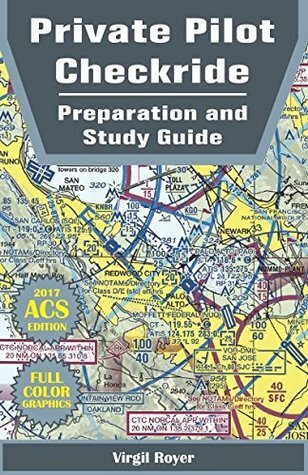Product desciption
Private Pilot Checkride Preparation And Study Guide Virgil Royer Royer by Virgil Royer [royer, Virgil] 9781520287959, 152028795X instant download after payment.
Referred to by many as the "Cliffs Notes" for the private pilot checkride; this is the prep and study guide that will help you ace your practical exam! Most material is presented in easy-to-flashcard and memorize charts, diagrams and mnemonics. The book is updated throughout the year so that when you order your copy it's always up-to-date (latest revision: January, 2019). The book begins by outlining the steps to take prior to your checkride under the new (June-2018) ACS including hours, training, required logbook endorsements, and then explains the rest of the exam procedure which concludes with the debriefing. The study guide then goes into greater detail for each anticipated area of the checkride including: 1. checklists to memorize (and those not to memorize); 2. airspace and VFR minimums; 3. weather (reports, clouds, winds aloft, pressure systems, thunderstorms, types of fog, etc.), 4. navigation, including: types of navigation, lost procedures, step-by-step instructions for completing a full navigation log, etc.); 5. safety & wellness (common in-flight sicknesses, rules for scuba divers, in-depth explanation of sensory illusions, etc.); 6. airport signs (including marshaling signals and a complete color runway diagram, etc.); 7. documents & inspections (learn an easier way to remember "TOMATOFLAMES"); 8. performance (including an explanation of leaning, and detonation vs. pre-ignition); 9. communications (towered airports, airspace transitions, calling FSS from an RCO, Class C procedure, activating flight plans, requesting flight following, etc.); 10. passenger briefing (including a sample briefing for your knee board); 11. maneuvers, takeoffs & landings (including a one-page maneuver reference card, plus a one-page list of all ACS maneuvers, takeoffs, landings, etc. which should be used during your final 3 hours of exam training with your CFI); 12. special emphasis areas (although they are now incorporated into the ACS, you should still be familiar with these areas because they are inherently tested throughout the exam - there is also a quick-reference flow chart for the new risk management expectations); 13. the "other things to study" chapter is chock-full of the miscellaneous areas that you will be expected to know such as airspeeds, altitudes, stall/spin awareness & recovery, carb icing, slips, lapse rates, V-speeds, unusual attitude recovery, SVFR, pitotstatic system, left-turn tendencies, a detailed engine diagram with fourteen questions you should be able to answer, and much more; 14. select FAR/AIM summaries (the select rules you should be most familiar with); 15. three full-color sectional chart quizzes (with answer keys); 16. a chapter on "going the extra mile" and finally a detailed list of what should (probably) be in your flight bag. You will notice that this book is not hundreds of pages, nor is it priced as high as other books on this topic. The length is purposefully limited because you cannot effectively study and memorize hundreds of pages prior to your practical test. In addition, the size is such that you can easily take it with you wherever you go and study when time permits. The price is set as low as possible, despite full-color graphics, because I have written and published this book for my love of aviation and the thought of helping student pilots be safe and successful. Please enjoy and always fly with an eye towards safety.


